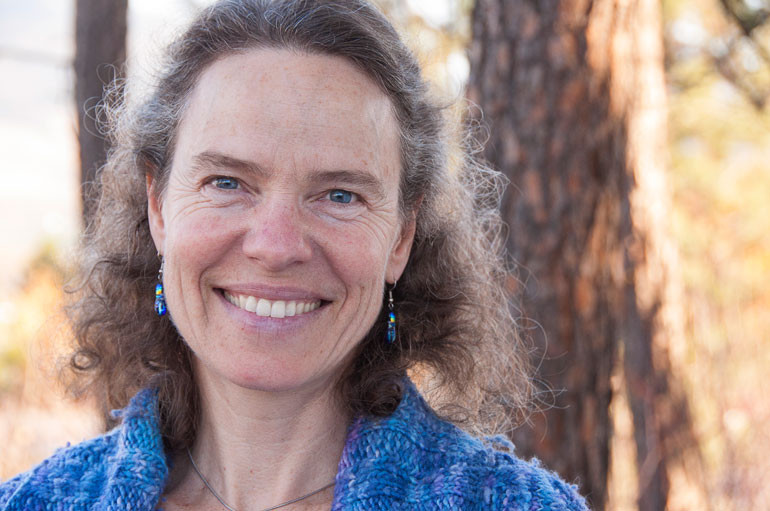
Celine Edwards is this year’s Pushor Mitchell LLP Gold Medal Leadership Prize winner.
Near-perfect grades, volunteerism and desire to help others leads to Pushor Mitchell recognition
It’s been a dream of Celine Edwards for as long as she can remember—to attend medical school at UBC and improve healthcare delivery for rural populations.
This week, Edwards graduates with a Bachelor of Science in microbiology. She walks the stage not only as a new graduate, but also with the Pushor Mitchell LLP Gold Medal Leadership Prize—the highest award available for an Irving K. Barber School of Arts and Sciences student.
Now in its tenth year, the $10,000 prize recognizes a top graduating student who has excelled academically and shown leadership while earning their degree.
Andrew Brunton, managing partner at Pushor Mitchell LLP, says the firm is proud to recognize the accomplishments of another exceptional student at UBC Okanagan.
“We are happy to support Celine in her further studies and development as a community leader,” he says. “We hope she continues to chase her dream of improving healthcare in rural communities. We are proud to be a supporter of UBC Okanagan and to be able to add Celine to the distinguished list of Pushor Mitchell LLP Gold Medal Leadership Prize winners.”
Originally from a ranch in the small town of Falkland, BC, Edwards moved to Kelowna to attend UBC Okanagan after receiving a UBC Major Entrance Scholarship. Throughout her studies, she has received many undergraduate awards that recognize her academic excellence and her well-rounded character. Edwards’ decision to major in microbiology was based on its challenging nature and the fascinating research avenues it presented in health care.
Aside from her academic achievements, Edwards gave back to the campus community by working as a teaching assistant, a supplemental learning leader, running the Microbiology Course Union and conducting research on both Alzheimer’s disease and lung cancer. She also serves as a support group facilitator for people with Alzheimer’s, and has devoted much of her time to fundraising for Alzheimer’s research.
Edwards shifted her research direction from neuroscience to cancer last spring when she joined the Early Detection Research Team at the BC Cancer Agency. During her time as a medical physics research intern, she’s been working on characterizing the lung cancer treatment pathway in order to improve the quality and access of care.
UBCO Biology Instructor Janet Kluftinger says Edwards is more than deserving of the award.
“I had the pleasure of teaching Celine in two very challenging courses and in both her level of achievement was exceptional,” says Kluftinger. “Despite a rigorous academic commitment, Celine also managed to find time to pursue valuable volunteer and research opportunities. These experiences seem to have solidified her aspiration to pursue a career in medicine.”
Edwards plans to continue her research at the BC Cancer Agency this summer, before moving to Vancouver in August for her first semester of UBC Medical School. She is thrilled to have been accepted into her top choice of UBC’s Island Medical Program.
“Being selected as the recipient of this prestigious award not only means a lot to me and my family, but also my community,” says Edwards. “I’ll be using the award to finance my studies in medicine, enabling my dream of improving the healthcare and quality of life of people living in rural communities.”

UBCO graduate Celine Edwards crossed the stage at the 11 a.m. ceremony on Thursday, June 6.
About UBC’s Okanagan campus
UBC’s Okanagan campus is an innovative hub for research and learning in the heart of British Columbia’s stunning Okanagan Valley. Ranked among the top 20 public universities in the world, UBC is home to bold thinking and discoveries that make a difference. Established in 2005, the Okanagan campus combines a globally recognized UBC education with a tight-knit and entrepreneurial community that welcomes students and faculty from around the world.
To find out more, visit: ok.ubc.ca.
The post Top student award goes to UBCO cancer researcher and rural health care advocate appeared first on UBC's Okanagan News.









